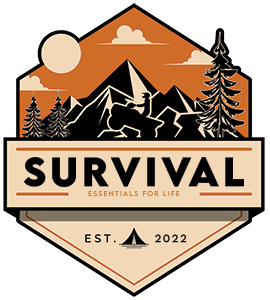During an emergency, keeping yourself and your family hydrated is vital. Running out of clean water can prove fatal, not only in dehydration but also in hygiene! The CDC recommends keeping two weeks worth of a gallon of water per person, per day in supply for drinking and basic cleanliness needs, but without potable (clean, drinkable) water you run the risk of exposure to illnesses borne of parasites and bacteria living in dirty water.
Keeping tap or store-bought water is great, but as the bottles age and the water “expires”, drinking it can become dangerous. Tap water can only be kept in reserve for six months, and rotating through expired water bottles can get expensive. Building a water collection and purification system can help ensure you will always have water for your family’s needs!
There are several filtration and purification methods available, and we can expect more to become available as the disaster-preparedness market grows. We’ll explain three current techniques of water filtration and how you can use them to make collected water, such as rainwater, safe to drink.
Gravity-Fed Filtration
By far the easiest of the strategies we’ll discuss, gravity-fed filtration is a passive method for those looking to purify water (mostly) effortlessly over time. These work similarly to your fill-and-leave Brita filters, letting the water trickle through several layers of filtration before coming to rest in a container. The best-known gravity filtration system is the Berkey Filters line, effective at removing protozoa, bacteria, and viruses, making it the only gravity-fed filtration system to meet purification standards. Offering purification systems from 1.5 gallons to 6 gallons, Berkey has cornered the market in travel and stand-alone water filters. These systems can be expensive, however, so finding alternative methods as a contingency is important.
UV Filtration
As part of a larger system, UV filtration works expertly to kill off bacteria and pathogens found in collected water. This method does run on electricity, so being 100% off the grid can pose struggles without a solar or battery backup. UV filters should be part of your greater filtration and purification setup, as they don’t remove debris and particulates found in water.
Quantum Purification
This incredible method of water purification was developed by US Water Systems and leads the pack in electricity-free and low-maintenance disinfecting. Similar to the UV purifying method, this system requires a separate filtering procedure to remove particulate and debris. The science of this type of disinfection is incredible and jargon-heavy, and to spare those of us that aren’t fluent, we won’t explain too in-depth, just understand that the quantum component attracts and neutralizes crucial parts of pathogens and bacteria’s ability to reproduce. These can run between $400 and $900, and although they’re expensive, the ability to drink collected water is a great investment!
Finding the right method to purify collected water can take some trial and error to find what’s just right for your family’s needs. These three types of water purification are just the beginning, and as the technology progresses we’re sure the options will explode!
